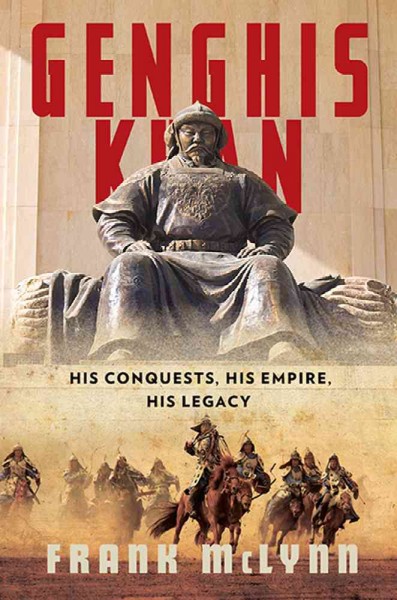 Ok, I’m just going to come right out and say it, Genghis Khan is my favorite nonfiction book I’ve read so far this season. No other book this year has taught me so much and at the same time been such an adventure; this one sucked me in! I love Mongols. Their culture is so unique and interesting. For example, did you know:
Ok, I’m just going to come right out and say it, Genghis Khan is my favorite nonfiction book I’ve read so far this season. No other book this year has taught me so much and at the same time been such an adventure; this one sucked me in! I love Mongols. Their culture is so unique and interesting. For example, did you know:
Genhis Khan conquered about 12 million square miles of land, more than any other person in history.
It was actually Khan’s daughters and granddaughters that succeeded him.
Genghis Khan’s real name was Temujin.
And that’s just a taste of what I have learned in this book!
One thing this book does well is context; McLynn describes the setting and geography of Asia and Europe before Genghis Khan’s invasions, which really helped a layperson like me get some background information before I dove into the more complex details of Khan and his life.
Another aspect about this biography I really liked was Mclynn’s borderline ranting on the Mongols. This historian has a pretty harsh view of Khan and his tribes, and he is not afraid to show it. I’d say he does have a point- I remember once offhandedly asking one of my history major friends who, in her opinion, was the most violent group of people in history. Her first guess was the Mongols. Whether or not she’s right is another discussion, but she and McLynn make a fair point: the Mongols were parasites of culture. They did not begin any new religions, or produce any great works of art or literature. They were brilliant at fighting. Khan fostered a group of his most intelligent strategists to lead his armies, including the infamous Subutai to conquer vast territories. Their battle strategies were so effective they are still studied by military officials today.
While I have read some reviews by readers who are critical of Mclynn’s possibly biased tone, I can find little fault in the man or his writing. One quick way I like to test the validity of a history book is to check the length of the bibliography. McLynn’s has a pretty good one, it’s over one hundred pages of notes and citations on Mongolian religion and culture.
Now, that does not automatically mean this book is perfect, but after reading I can testify to the depths of research done here. This book was wildly interesting and very informative; and a great addition to the awesome history books that have been released this year.


Comments are closed.